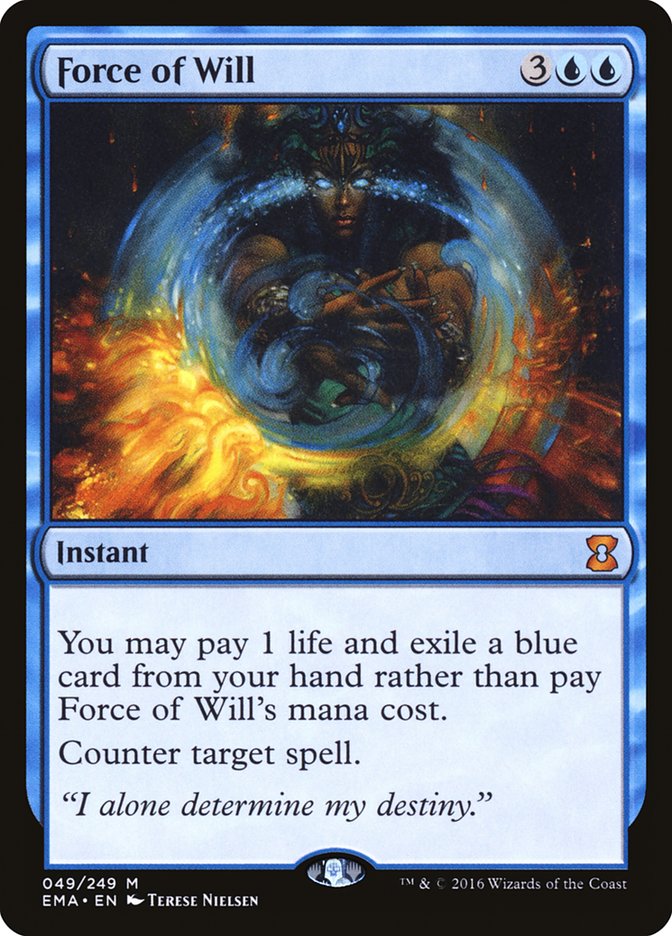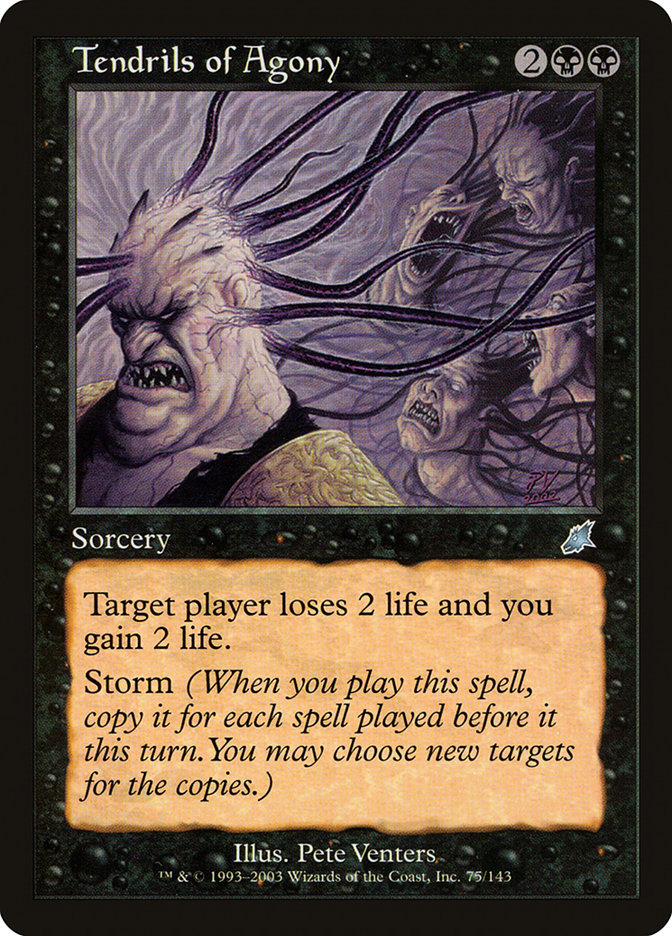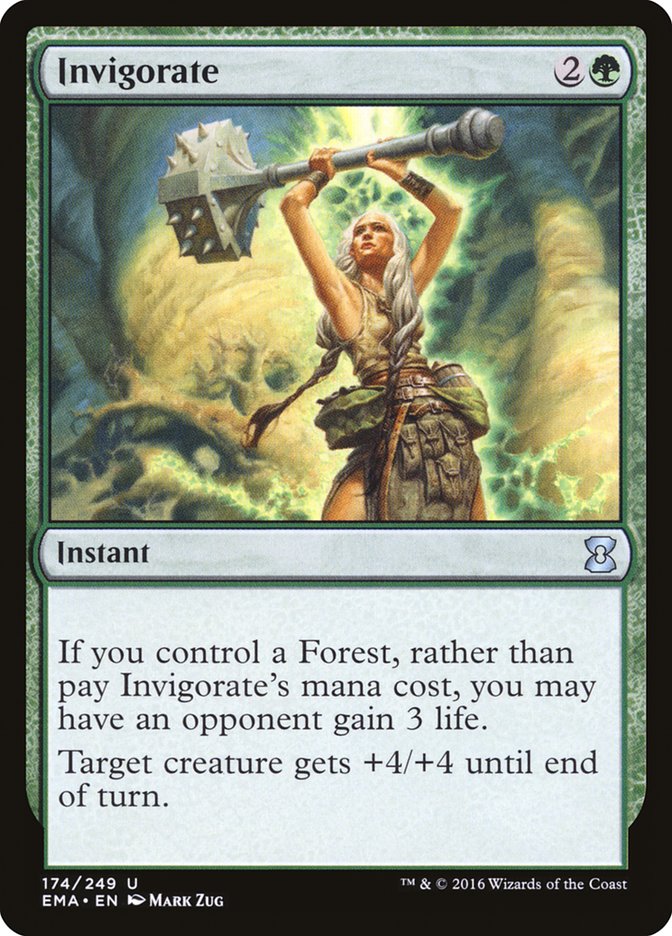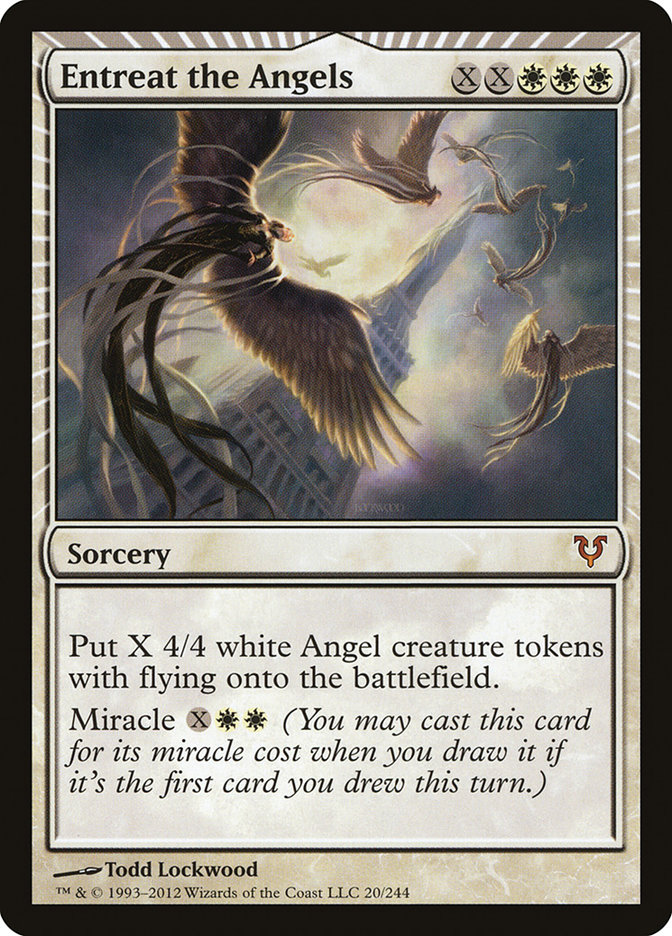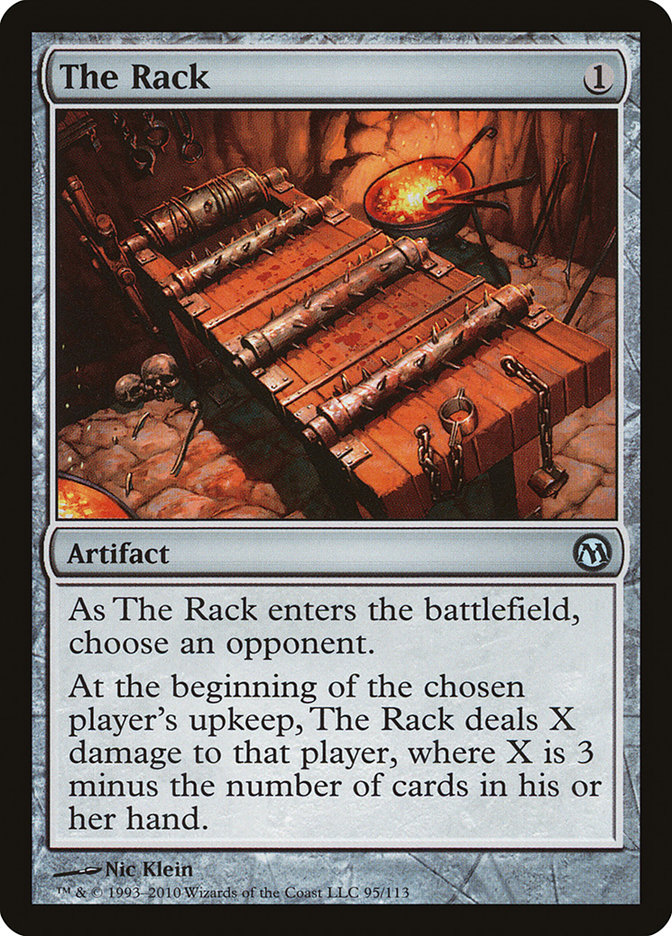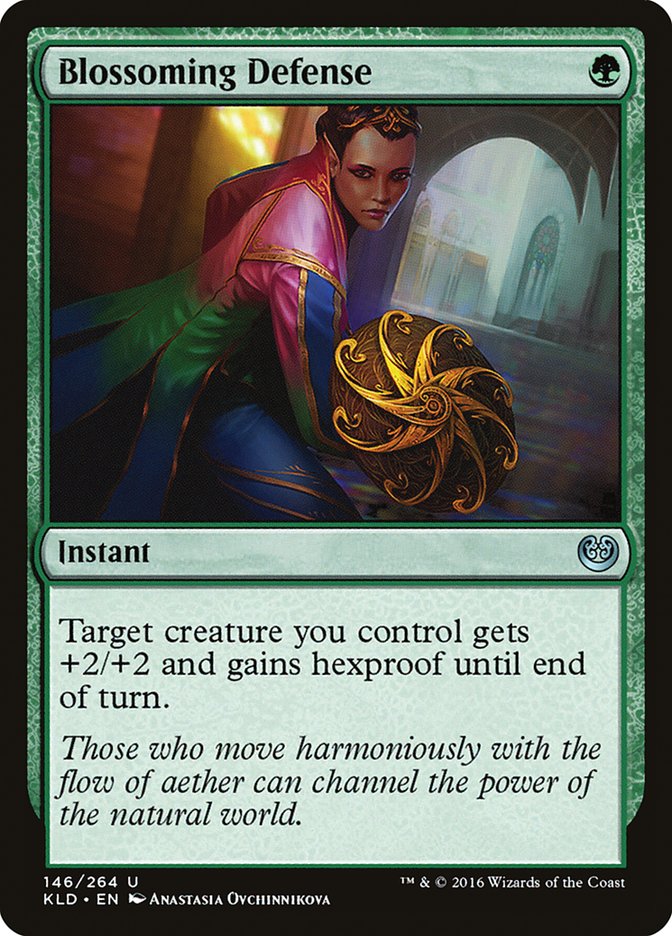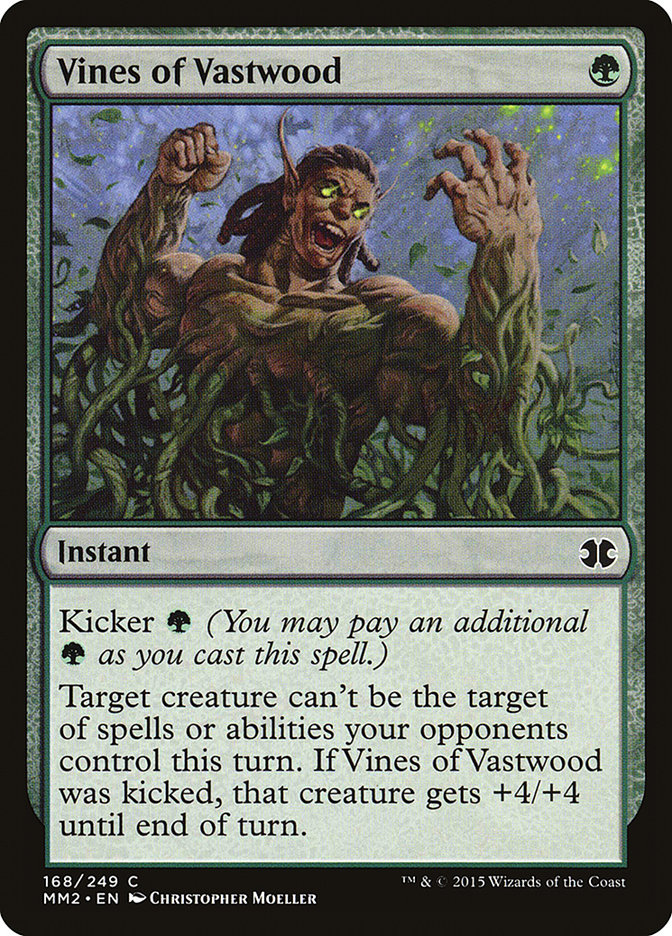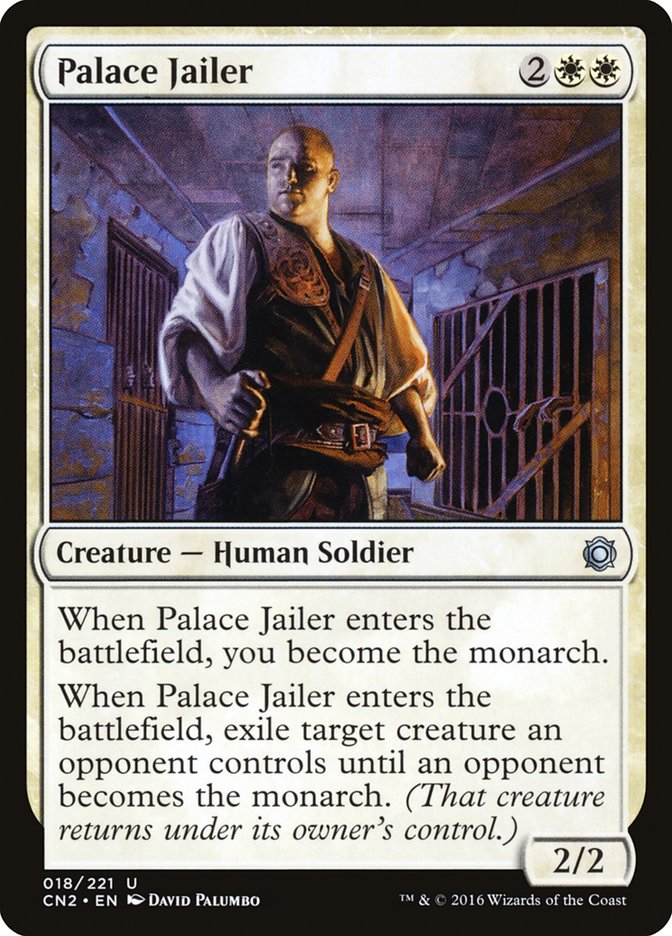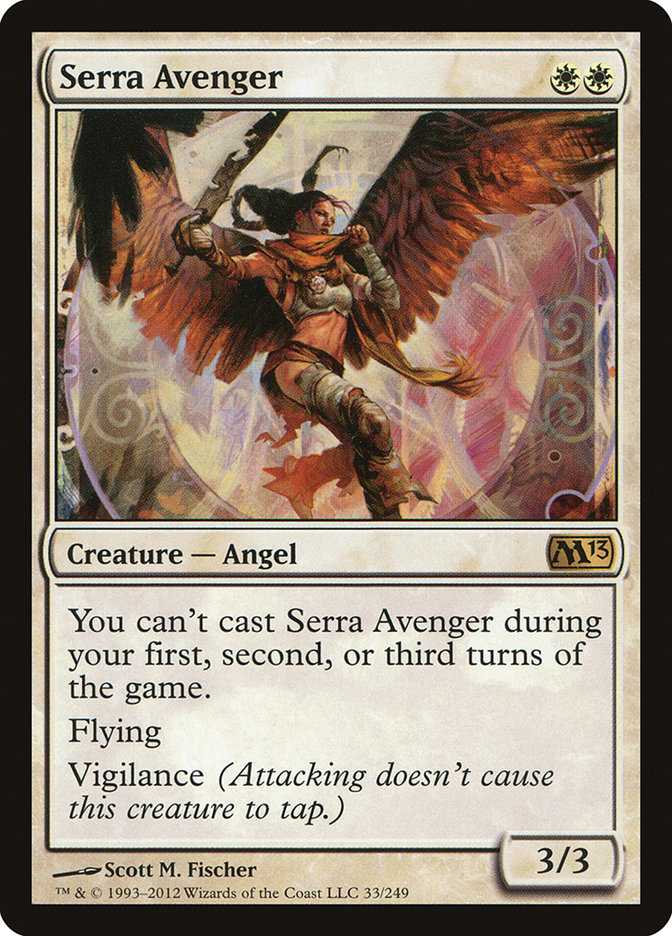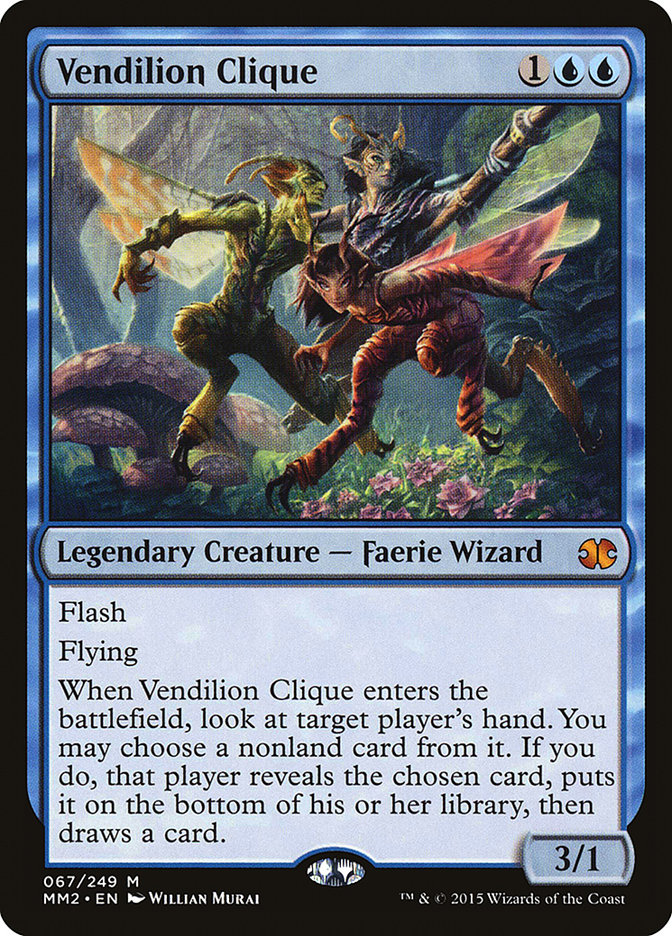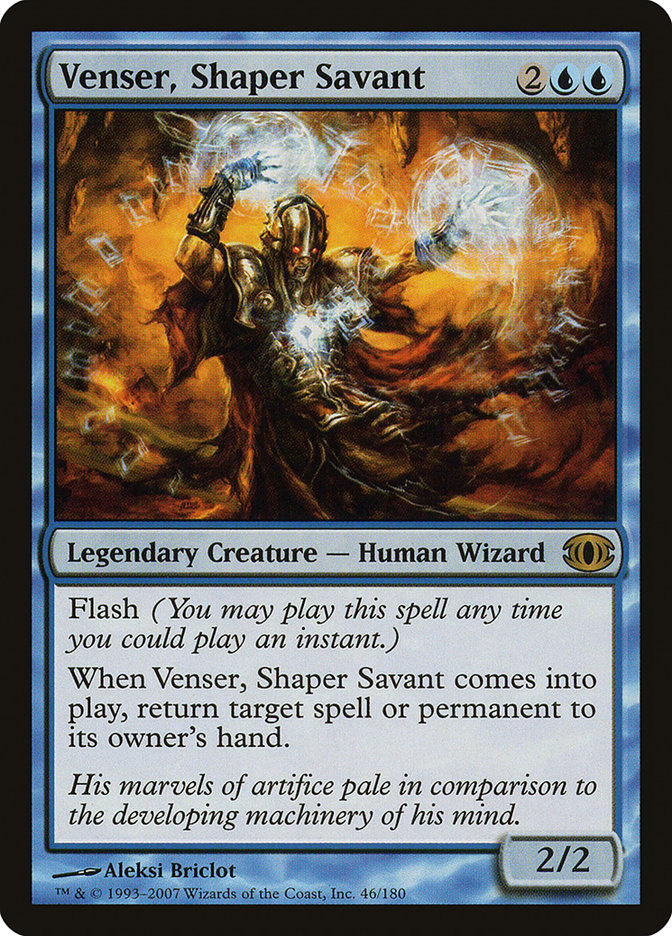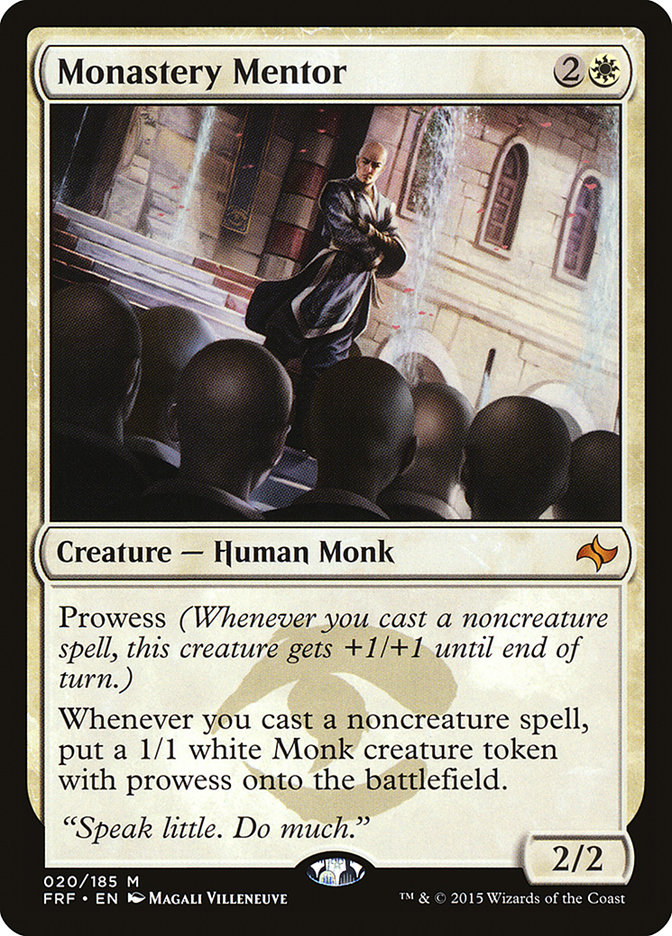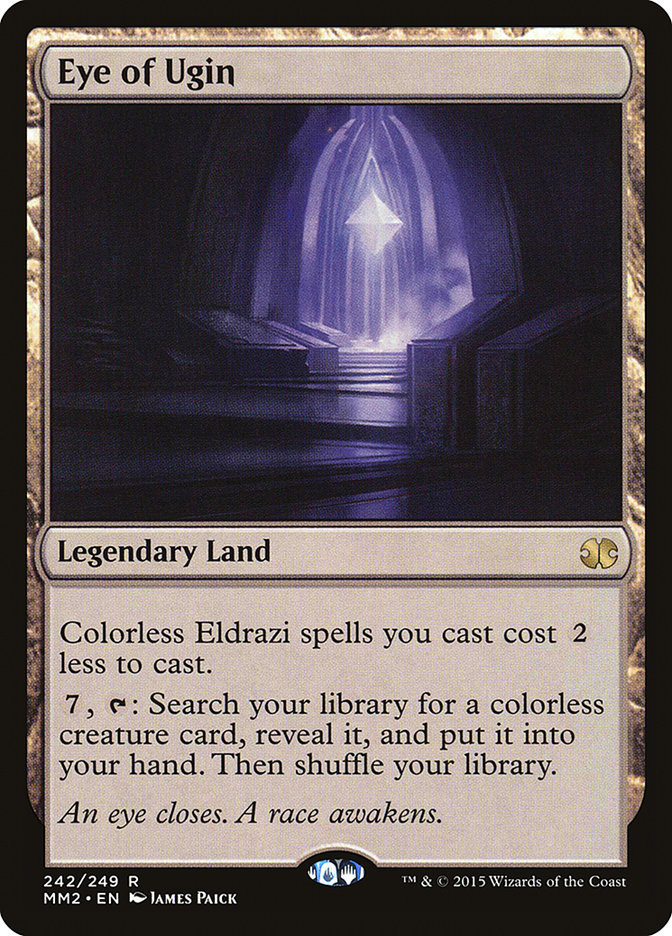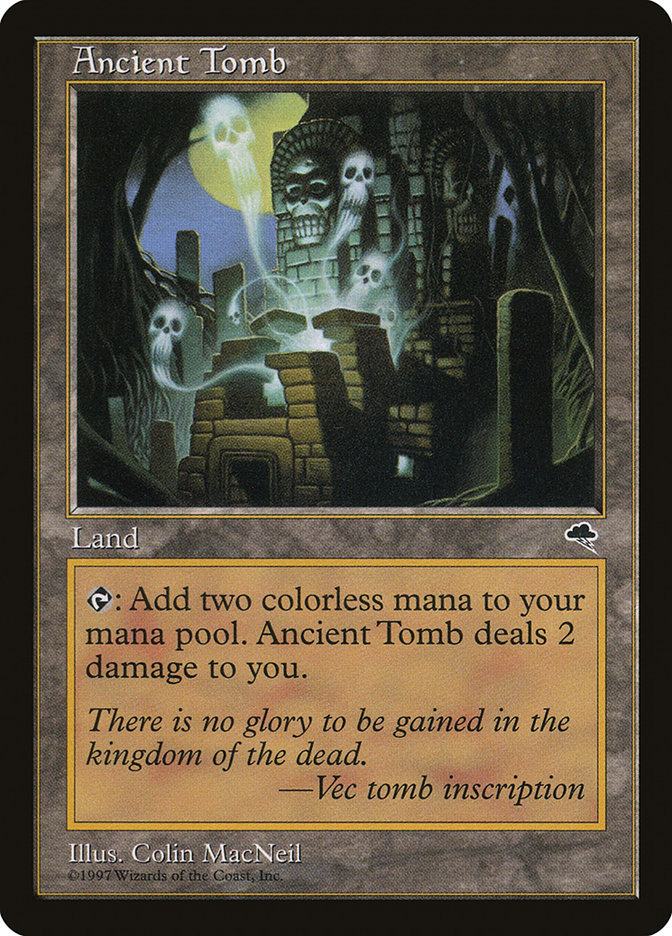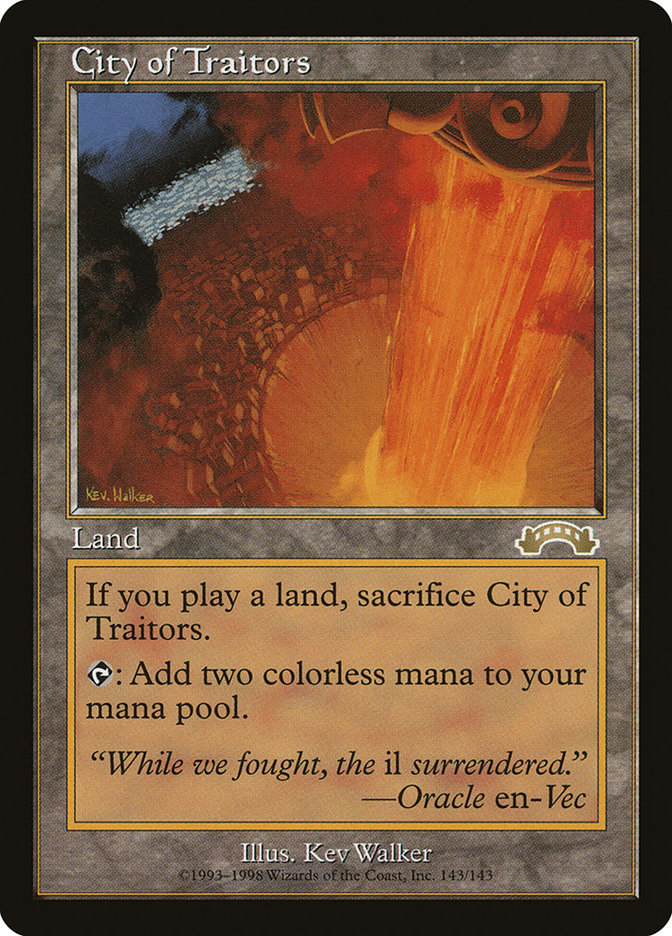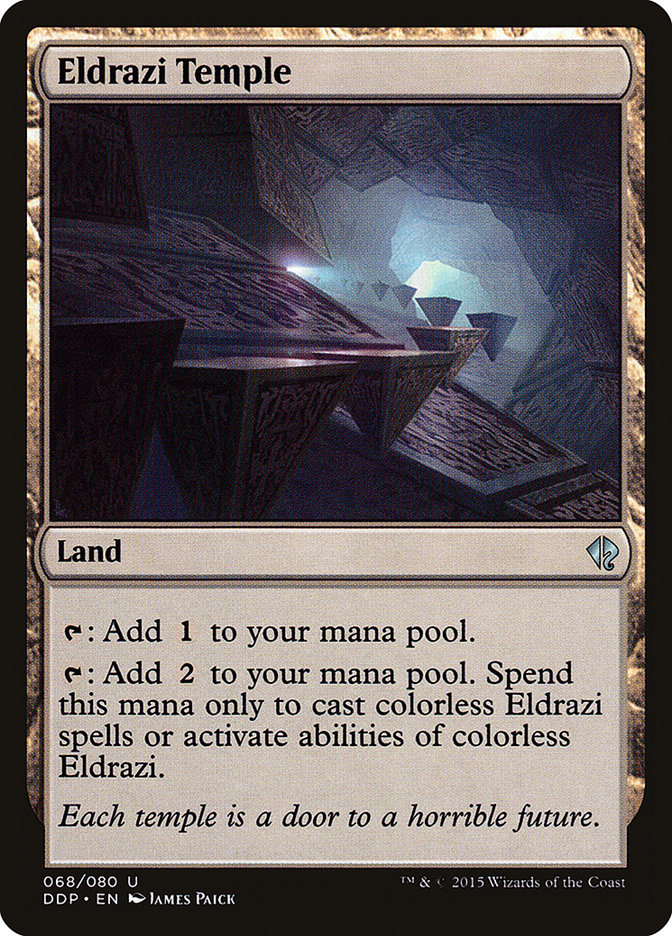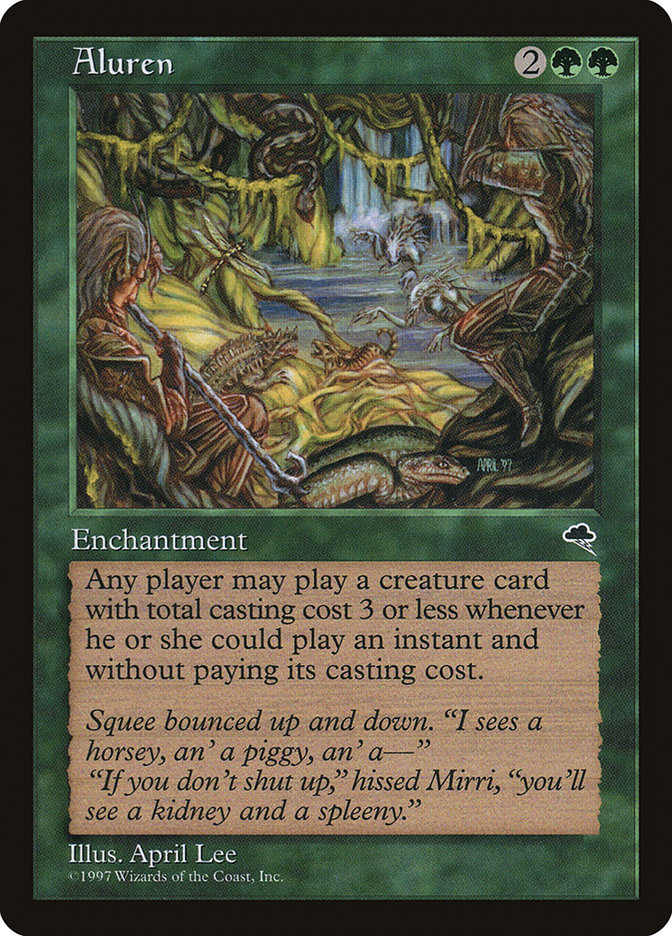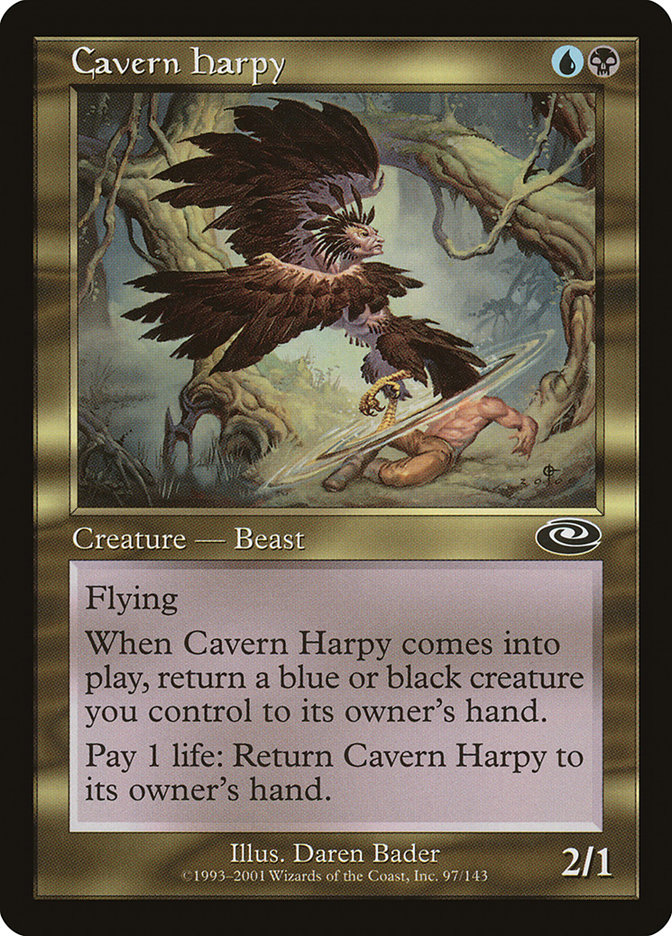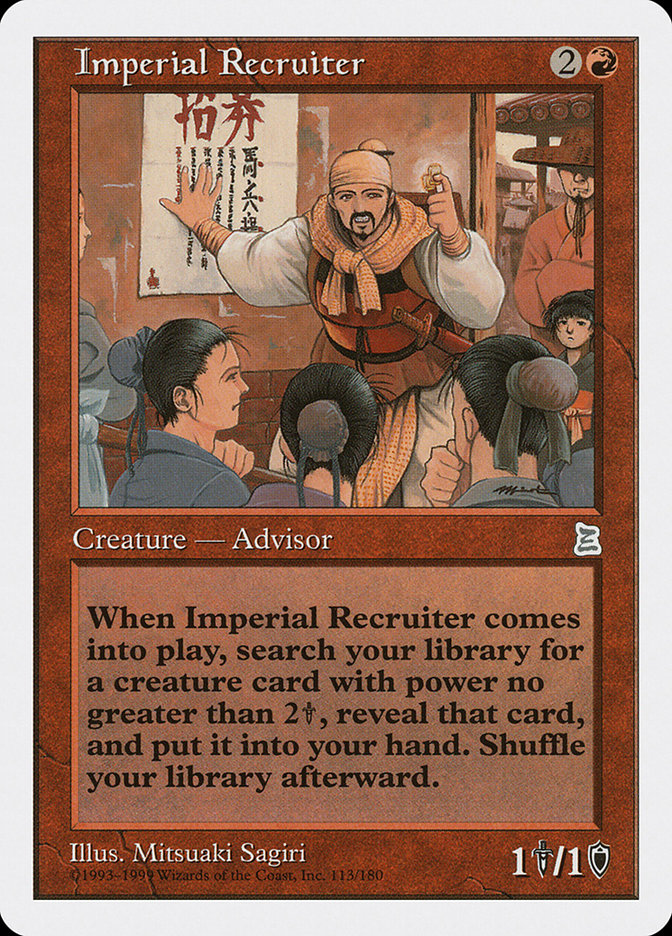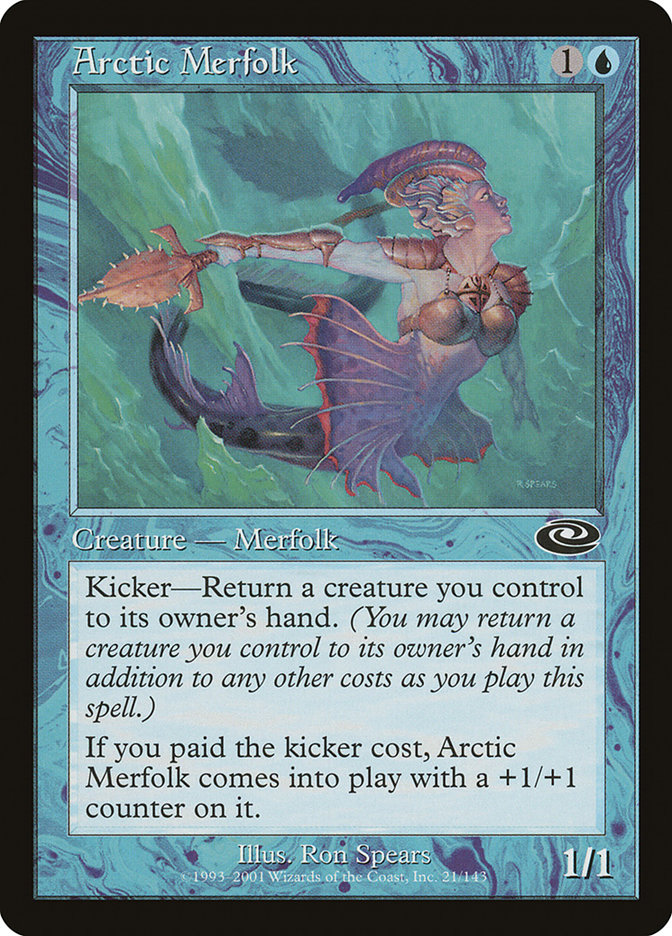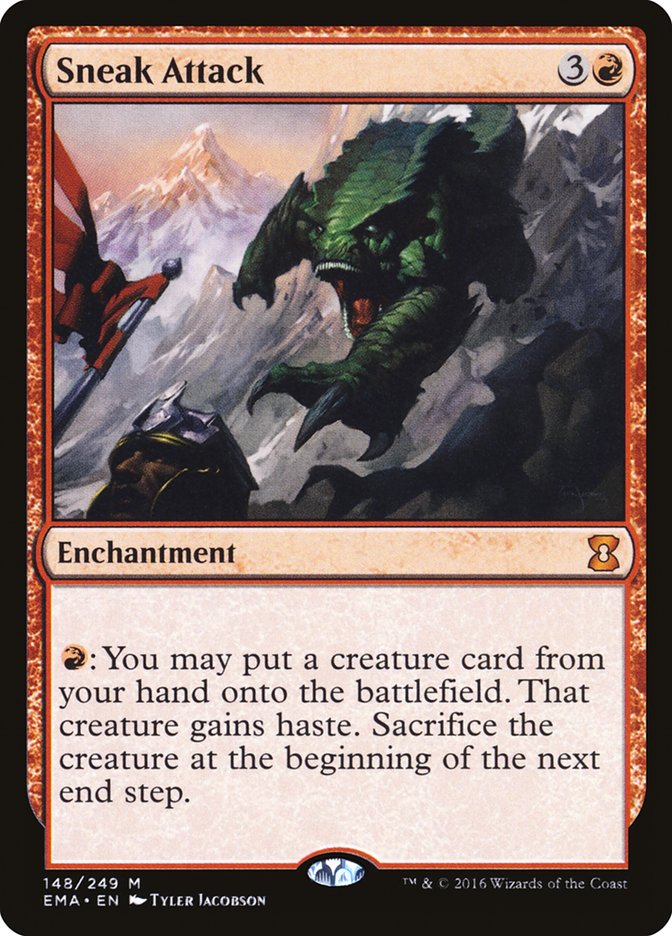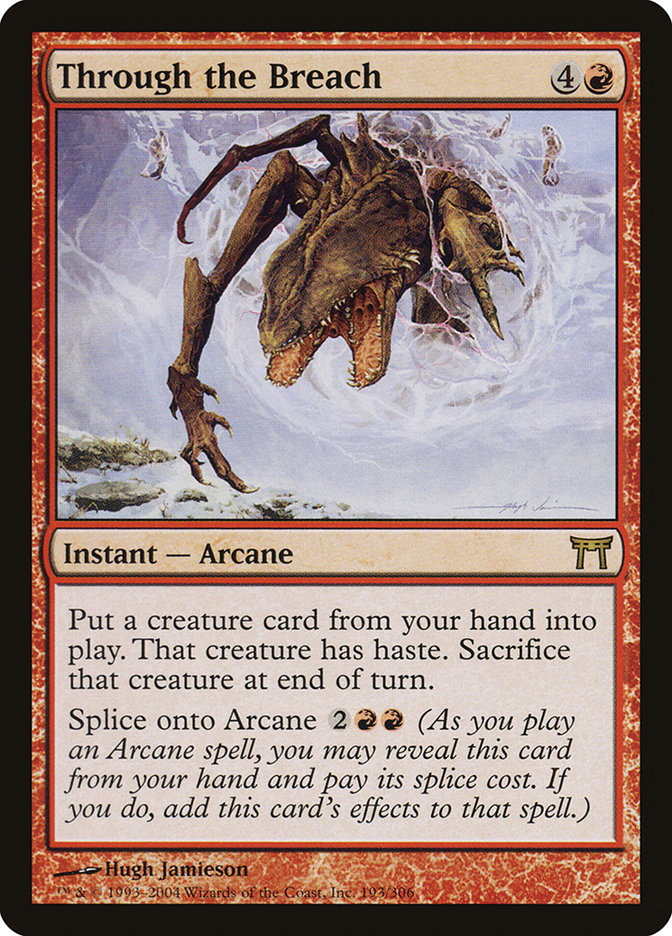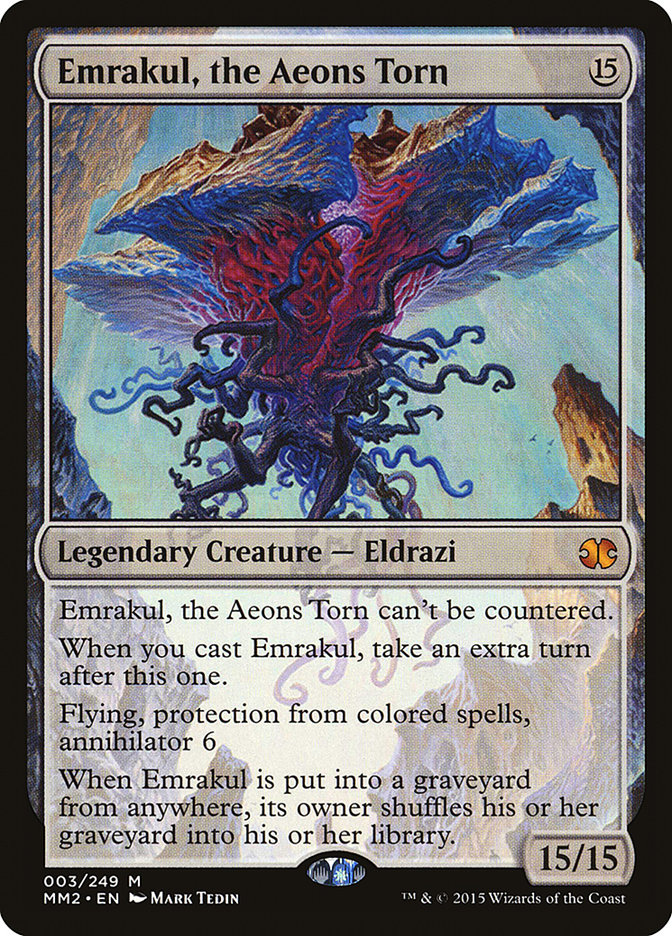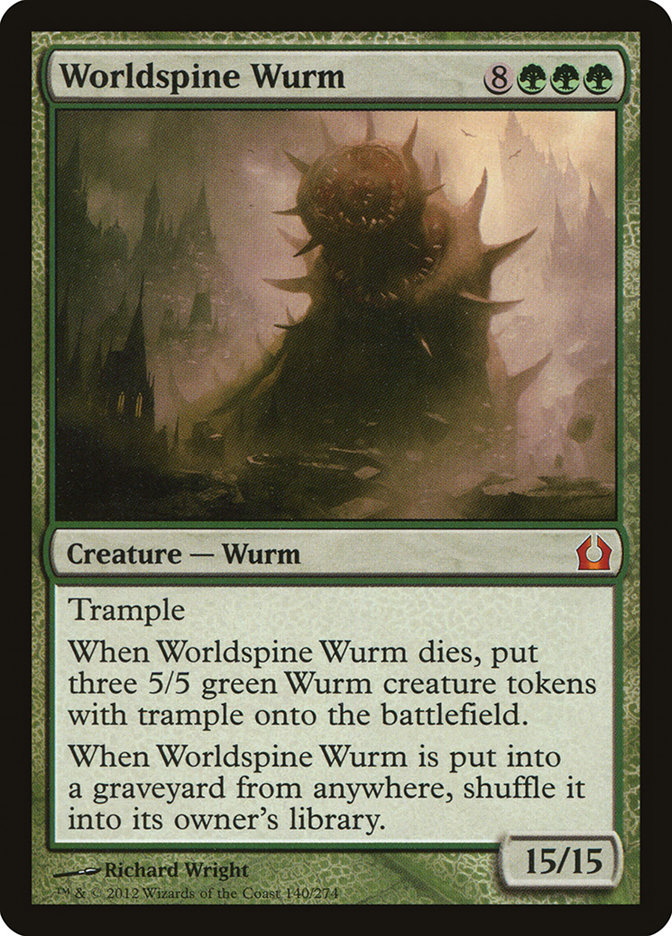Ahhh, Legacy!
We’ve missed you.
For me, the upcoming Open in Baltimore offers a refreshing change from Standard and Modern.
It’s not exactly a two- or three-deck Standard format, but it’s drawing closer to that reality with W/U Flash, W/R/x Vehicles, and B/G Delirium posting the lion’s share of successful finishes.
Modern is currently spotlighting two of my favorite decks — Dredge and Infect — as two of the top decks to beat. I prefer playing when there’s less heat on the archetypes I like.
I’ll always have you.
Eternal Weekend began yesterday in Columbus and will be running all weekend long. As much as I’d like to attend, I’ll be taking a much-needed weekend off by dressing up as Gomez Addams. I had to skip Halloween festivities last year.
Legacy isn’t as commonplace on the SCG Tour as it was last year in terms of the main event. It’s easy to become rusty in a format when there are fewer tournaments. Legacy is very slow to change and is much like riding a bike in that you never forget how. Still, it doesn’t run to hurt to warm up your legs before hopping back up on that Schwinn.
This is will be a refresher on the State of Legacy that highlights the decks that I think are good and some of the options that I’m considering playing at #SCGBALT.
Creatures (12)
Lands (20)
Spells (28)

Let’s get #1 right out of the way. This has been my best weapon for nearly three years now. It’s the deck I’ve had the most success with and that I’m most comfortable with.
The biggest question is whether Blossoming Defense deserves a spot in the deck, likely over Vines of Vastwood.
I’m thinking not.
Vines of Vastwood is weaker in Modern now that Splinter Twin is gone and is mainly used in mirror matches. In Legacy mirror matches are commonplace as well. Vines of Vastwood is clutch to prevent an Umezawa’s Jitte from equipping. It can mess up an Elves player trying to untap an Elf. With the Invigorate plus Berserk combo, you’ll win most games by pulling that off than you’ll lose by being short two damage and/or a green mana.
There are a lot of cards in Legacy. Infect is a rare deck that can switch roles in matchups between aggro, control, and combo. It can nickel-and-dime with chip shots with an Infect creature that could involve Noble Hierarch or Pendelhaven. It has enough countermagic to fight combo decks or to protect itself. It also just has a well-protected turn 2 win that always must be respected. I’ve stuck with Infect so long because of its ability to perform against a wide range of decks.
Creatures (26)
- 3 Mother of Runes
- 3 Flickerwisp
- 4 Stoneforge Mystic
- 1 Mirran Crusader
- 2 Phyrexian Revoker
- 4 Thalia, Guardian of Thraben
- 1 Spirit of the Labyrinth
- 2 Thalia, Heretic Cathar
- 3 Recruiter of the Guard
- 2 Sanctum Prelate
- 1 Palace Jailer
Lands (23)
Spells (11)

Creatures (26)
- 3 Mother of Runes
- 3 Serra Avenger
- 4 Flickerwisp
- 4 Stoneforge Mystic
- 3 Phyrexian Revoker
- 4 Thalia, Guardian of Thraben
- 3 Recruiter of the Guard
- 2 Sanctum Prelate
Lands (23)
- 13 Plains
- 4 Wasteland
- 2 Karakas
- 4 Rishadan Port
Spells (11)

Death and Taxes rewards players for having a deep knowledge of Legacy. Without Brainstorm to filter cards or the ability to see the opponent’s hand, you have to make a lot of educated guesses with your cards.
The first Death and Taxes from Colin Logan is the more interesting of the two, featuring three new Conspiracy: Take the Crown cards: Recruiter of the Guard, Sanctum Prelate, and Palace Jailer.
Recruiter of the Guard is the most widely accepted of the three, allowing for a toolbox that complements the one provided by Stoneforge Mystic. Four-of staples like Mother of Runes and Flickerwisp can be shaved as Recruiter of the Guard can function as additional copies as needed.
Sanctum Prelate will normally be set to one to combat Lightning Bolt, Brainstorm, and Ponder. It shuts off your Swords to Plowshares and Aether Vial, but Death and Taxes is interested in messing up the opponent more and the Prelate on one will often impact them more anyway. Sanctum Prelate can be set on three against Show and Tell decks or on two against Life from the Loam and Punishing Fire decks.
Palace Jailer is a sweet card that introduces The Monarch to the game. Against control decks that don’t attack, you could be left with being The Monarch for many turns, giving you the ability to grind late-game. Unlike Banisher Priest, Palace Jailer keeps the creature jailed until the opponent becomes The Monarch, meaning that as long as you can turtle up and not take any hits, the creature will remain exiled even if Palace Jailer is removed.
The second list by Phil Gallagher looks very tuned. He sticks with Serra Avenger’s efficiency even though Recruiter of the Guard can’t grab it. He doesn’t mess around with Flagstones of Trokair, instead running more basic Plains and lessening his exposure to Blood Moon, Magus of the Moon, and Back to Basics.
As much I can get behind the sweetness of Palace Jailer, I think I’d stick to Phil’s build if I were to play Death and Taxes at #SCGBALT.
Creatures (14)
Lands (18)
Spells (28)

Grixis Delver has become the default Delver of Secrets version in Legacy. Daze, Force of Will, and Wasteland make sure nothing too degenerate gets through too early and punish land-light draws from the opponent. Deathrite Shaman provides acceleration, mana fixing, and interaction with Reanimator and Life from the Loam. Their clock is quick and Young Pyromancer can swiftly get out of control with all of the cantrips like Gitaxian Probe, Ponder and Brainstorm.
The Vendilion Clique is the flex creature slot of the deck and is sometimes a Snapcaster Mage, True-Name Nemesis, Grim Lavamancer, or just the fourth Young Pyromancer.
Like Infect, Grixis Delver has the ability to be aggressive and also control the game. They have the tools to beat anything. It also plays well against creature-combo decks like Infect and Elves with all their creature removal.
Grixis Delver is one of the best decks in Legacy and is a good place to start if you don’t play much Legacy and want something that has game against anything.
Creatures (8)
Planeswalkers (2)
Lands (22)
Spells (28)
- 4 Sensei's Divining Top
- 4 Brainstorm
- 3 Force of Will
- 3 Swords to Plowshares
- 2 Spell Snare
- 4 Counterbalance
- 2 Ponder
- 2 Entreat the Angels
- 4 Terminus
Sideboard

Creatures (7)
Lands (20)
Spells (33)

Miracles builds have broken off into two camps: Legend Miracles and Mentor Miracles. Joe Lossett favors the trickiness of legendary creatures like Vendilion Clique and Venser, Shaper Savant along with Karakas to continue utilizing “enters the battlefield” triggers while also protecting his creatures and bouncing troublesome opposing legendary creatures like Emrakul, the Aeons Torn or Thalia, Guardian of Thraben. Every creature in Joe’s deck is a Wizard, which works very well with Cavern of Souls in the mirror match. The Miracle Man has been working on his build for approximately forever and continues to have put up results with his build while hardly anyone else is willing to pick it up.
Instead the majority of Miracles players have moved towards Monastery Mentor. This allows Miracles players to close out games quickly and avoid unfortunate unintentional draws. With two Sensei’s Divining Tops, you can cycle them and create as many Monk tokens and prowess triggers as you have available mana to recast the Tops. They also load up on Ponders, more great cantrips that work well with Counterbalance and Monastery Mentor to find and set up a Terminus or to find key sideboard cards.
Of the two builds, I find the Monastery Mentor version the scarier while playing with Infect. I’d prefer to be able to sculpt my hand for one key turn while being under little pressure. A resolved Monastery Mentor doesn’t give me that luxury.
Creatures (24)
- 2 Simian Spirit Guide
- 4 Endless One
- 2 Endbringer
- 4 Eldrazi Mimic
- 4 Reality Smasher
- 4 Thought-Knot Seer
- 4 Matter Reshaper
Lands (25)
Spells (11)
Sideboard

Creatures (23)
- 4 Endless One
- 4 Eldrazi Mimic
- 3 Eldrazi Displacer
- 4 Reality Smasher
- 4 Thought-Knot Seer
- 4 Matter Reshaper
Lands (24)
Spells (13)

The Eldrazi have been doing well in Legacy due to the quick mana of the “Sol lands” and the high overall impact of a quick Chalice of the Void. Turn 2 Thought-Knot Seer is as good as you remember from Modern.
Eldrazi tends to have a good Miracles matchup due to Chalice of the Void and its high-cost spells that avoid Counterbalance. It has some of the best openings in Legacy without ending the game on the spot. However, once that explosive draw is expended, it’s left to the mercy of the top of its deck.
Some builds run white for Eldrazi Displacer and sometimes Thalia, Guardian of Thraben. Karakas, Lotus Petal, and Mox Diamond are already cards that Eldrazi is interested in running, so white isn’t too difficult. If you see a painland like Brushland, be sure that’s a clear signal that they have white cards somewhere in their deck.
Creatures (16)
Planeswalkers (2)
Lands (21)
Spells (21)

Shardless Sultai is still a powerful deck that plays the grindy game the best against opposing creature decks.
The trifecta of Thoughtseize, Deathrite Shaman, and Force of Will gives Shardless Sultai game against anything. Shardless Agent, Baleful Strix, and Ancestral Vision refresh your hand. Brainstorm sets up the Ancestral Vision for Shardless Agent while cascading past excess land.
Shardless Sultai is a “fair” deck that is pretty good in an open metagame. It has a little against everything but not always enough against the most linear decks.
Creatures (20)
- 1 Eternal Witness
- 4 Imperial Recruiter
- 1 Cavern Harpy
- 1 Dream Stalker
- 1 Parasitic Strix
- 4 Baleful Strix
- 4 Shardless Agent
- 4 Deathrite Shaman
Lands (21)
Spells (19)

Creatures (24)
- 1 Eternal Witness
- 3 Veteran Explorer
- 1 Cavern Harpy
- 2 Arctic Merfolk
- 1 Parasitic Strix
- 4 Baleful Strix
- 3 Shardless Agent
- 4 Deathrite Shaman
- 1 Reclamation Sage
- 4 Recruiter of the Guard
Lands (19)
Spells (17)

Aluren isn’t usually at the top of a metagame list, but with two in the Top 8 of last weekend’s Legacy Classic and with one of the copies winning the tournament, it’s a deck that deserves attention.
Aluren wins by landing its namesake enchantment and then assembling the combo of Parasitic Strix and Cavern Harpy. During each cycle, you’re draining for two life while paying one to bring back Cavern Harpy. Baleful Strix and Shardless Agent are value creatures that help dig. Deathrite Shaman and Veteran Explorer ramp you to four mana to cast Aluren.
Either Imperial Recruiter or Recruiter of the Guard can find your combo pieces.
Recruiter of the Guard reduces the barrier to entry to play Aluren by getting around the price tag of Imperial Recruiter. Since Recruiter of the Guard checks toughness where Imperial Recruiter checks power, the switch also has to include Arctic Merfolk over Dream Stalker.
The Dream Stalker / Arctic Merfolk slot protects against spot removal like Swords to Plowshares breaking up your combo and can just be used to generate value with your value creatures.
I’ve personally liked Aluren ever since they’ve moved away from Force of Will and more towards the discard of Cabal Therapy and Thoughtseize. Your blue spells are plentiful and are quite precious, especially in the cases of the one-of Parasitic Strix and Cavern Harpy. Before, the deck had to play more copies of each, which clunked it up pretty hard.
Creatures (15)
Planeswalkers (3)
Lands (23)
Spells (19)

This Dave Patwell deck finished second in the Legacy Classic in Milwaukee. It’s a little reminiscent of Faeries and a little of Brain Braun-Duin’s winning Grand Prix New Jersey Jeskai Stoneblade deck.
The seven flash creatures are end-step plays before a Standstill. Even a bare Standstill is acceptable with four Mishra’s Factory and a Mutavault in the deck.
The four Grim Lavamancer in the deck are very scary (even downright rude) from an Infect player’s standpoint. Honestly, it’s a great creature that kills off opposing one-drop creatures like Noble Hierarch, Delver of Secrets, or Deathrite Shaman. I imagine it’s fairly common to curve Grim Lavamancer into Standstill while facing down a creature or two, knowing that fetchlands will fill your graveyard eventually.
While this take on Jeskai Stoneblade only had one pilot, it’s the kind of deck I see really taking off before #SCGBALT. It has game against all the small creature decks with those Grim Lavamancers and with Stoneforge Mystic for either Batterskull or Umezawa’s Jitte.
It’s wild that Lightning Bolt just isn’t good enough for the deck. I guess Grim Lavamancer is just better and the deck will rarely need to use Lightning Bolt as reach to kill off the opponent with so many creature-lands.
Creatures (16)
- 4 Simian Spirit Guide
- 2 Emrakul, the Aeons Torn
- 2 Inferno Titan
- 3 Griselbrand
- 2 Worldspine Wurm
- 3 Combustible Gearhulk
Planeswalkers (1)
Lands (19)
Spells (24)

Jeff Hoogland has been championing Mono-Red Sneak Attack. It seems to be trending upwards and may be more popular than similar decks like Omni-Tell or Sneak and Show. It aims to get a large creature onto the battlefield as soon as possible with quick mana in Simian Spirit Guide, Ancient Tomb, and Seething Song.
In other games, Mono-Red Sneak Attack acts as a prison deck by landing a quick Chalice of the Void or Blood Moon. Sometimes that’s just enough to get a free win.
Combustible Gearhulk and Chandra, Torch of Defiance are new additions from Kaladesh that slot in quite nicely. Combustible Gearhulk is better than Inferno Titan in most spots when the opponent doesn’t have creatures on the battlefield. I like Chandra, Torch of Defiance better than the other red planeswalker options like Koth of the Hammer and Chandra, Pyromaster. She ramps, removes, and draws cards all in one, while the other options only do a couple of those.
There isn’t a ton of play to this deck after the first couple of turns and does feel pretty weak if your initial burst is solved with resistance. Lands, redundant lock pieces, uncastable fatties, and acceleration are all bad topdecks at certain times. Most games will be determined on the first turn.
Conclusion
As big as Legacy is, it’s impossible to list everything you can expect to face. These are the decks that have either caught my fancy or have been doing well enough lately that they should be prepared for. If you’ve been out of Legacy for a while, it’s easy to miss what new decks have popped up and how cards from new sets have improved existing decks.
Baltimore will be the first Legacy Open since the releases of Kaladesh and Conspiracy: Take the Crown. Who knows what fresh goodies people have been keeping hush-hush for this tournament?
I’m ready to find out.


